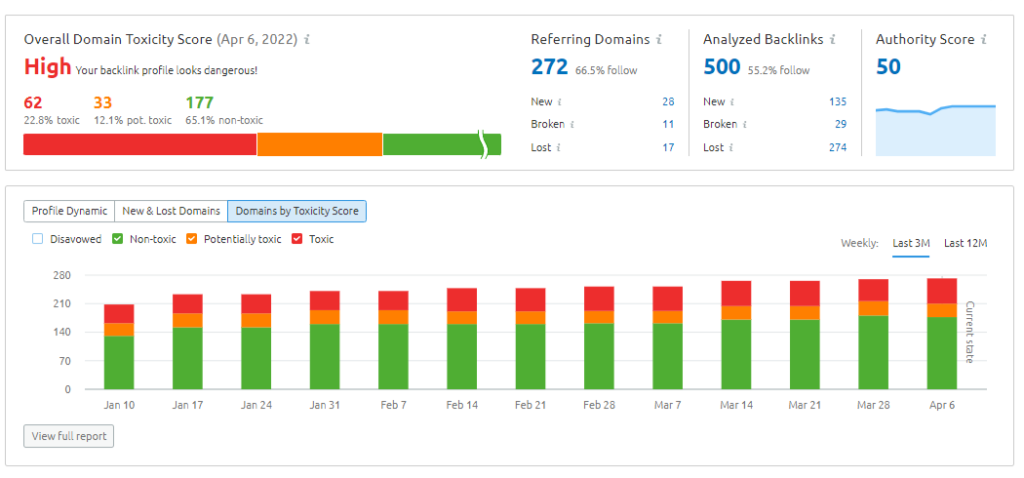Since backlinks are the most important off-page ranking factor in SEO, all audits should include a deep dive into backlinks. Further, the audit should include a strategy for acquiring more.
There are numerous factors we examine during a backlink analysis which is included in an e-commerce SEO audit. Top of the list are:
- Current backlink profile
- Toxicity Level
- Broken Links
- Opportunities for new links/Strategy
Auditing Your Current Backlink Profile
Using a handful of third party tools, we’ll put together a profile of links to pages on your site. We’ll then cross reference that list with Google Search Console to see which of these links Google is aware of, and how they may be helping or hurting you.
It’s important that your profile looks “natural”- meaning that you’ve acquired links over time by creating great content, and providing value to the user. We don’t want to see a large collection of links that were purchased, or acquired through other means that look “fishy”.
We’ll take a look at the domain authority of links to your key pages, and see if there’s an opportunity to improve or redirect those. You always want your best backlinks to be pointing at your most important pages, or at least topic clusters. Also important here is the number of unique referring domains. In general, the more the merrier.
Determining Backlink Toxicity Level in an Audit
Chances are you’ve been sent a “free SEO audit” before to your inbox. One of the pages in this PDF is talking about toxic backlinks, and you probably have “a lot of them”. Like in the image below.
Just close the PDF and go about your day.
9 times out of 10, those toxic links are from spammy directory sites, you didn’t ask for them, and frankly, Google just ignores them. Go look in your Search Console and see if those bad links from “The Globe” are even in there. We’re willing to bet they’re not.
However, it’s possible that in the past, your in-house SEO, your agency, or maybe even the CEO went on a link building adventure and got some links you REALLY don’t want anymore. Those are the ones we’ll be looking for, and we’ll instruct you on how to deal with them.

Finding Broken Links in an SEO Audit
During the backlink audit, we’ll probably uncover some links to an old blog post, product or web page that doesn’t exist anymore. Depending on how “good” that link is, we’ll offer suggestions on how to take advantage of it by either asking the linking site to change it to point to current content, or to redirect the old page to a similar new one.
This can be trickier if you’ve changed domains completely, but a full audit of broken links still has a lot of value, and can provide you an organic traffic lift relatively quickly.
Link Building Strategy
Lastly, as part of our commitment to knowledge transfer after the audit, we’ll provide you with a link building strategy you can adhere to going forward. It won’t require a lot of technical SEO knowledge- it’s more about creating, presenting, and amplifying your content so that it has some stickiness.
It will be top tier work that other websites will want to link to so that they can provide additional value to their own users.
You can read a little bit more in this post about some backlinks that e-commerce companies should be going after.
Backlinks and your E-commerce SEO Audit
When our audit is complete, and you’ve had time to digest it, you’ll have an excellent understanding of your backlink profile. You’ll know if you have any bad links to get rid of, or great links to repurpose.
What’s more, you and your team will have a strategy you can employ to get more and better links in the future.
Ready to get ranked? We’re ready to help.





